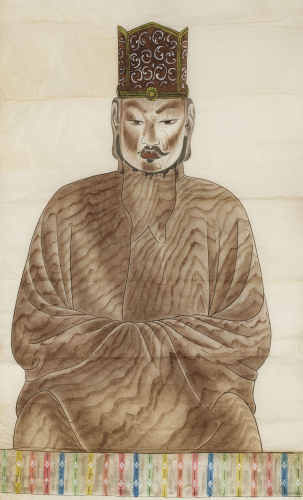Kamikura Shrine: The Firefall of Mt.Kamikura Slope, a Down Dragon
Annually, on the 6th day of January, the New Year of the lunar calendar (February 6th), for over 1,800 years, the Oto-Matsuri takes place at night as a sacred festival of Kamikura Shrine. During this festival, around 2,000 men clad in white attire rush down the 538 steps from the summit to the base of the mountain while carrying torches. This fascinating descent of fire down the mountain resembles a down dragon. This festival aims to renew the sacred fire, symbolizing preparations for the new year ahead.

A Sacred Rock, “Gotobiki-Iwa"

Kamikura Shrine—a sub-shrine of Kumano Hayatama Taisha—is situated on the slopes of Mount Kamikura. It lies along the Ise Road of the Kumano Kodo pilgrimage route, connecting to the Nakahechi route, which leads to the three grand Kumano shrines: Kumano Hayatama Taisha, Kumano Hongu Taisha, and Kumano Nachi Taisha.
The shrine features a significant sacred rock named “Gotobiki-Iwa,” believed to be the first place on which the Kumano Okami deity descended.
The Divine Power of Kumano Wooden Statues: Over 1,000 Years of Reverence

At Kamikura Shrine, two remarkable wooden statues of Kumano Okami, designated as national treasures, stand as symbols of enduring divine powers. These two statues represent Kumano Hayatama Okami and his consort Kumano Fusumi Okami. Even after 1000 years, their divine power seems to radiate outwards. Standing over a meter tall, the statues embody a divine nature that transcends all things. The large, wide-open eyes of Kumano Hayatama Okami convey heroic dignity, while the well-rounded appearance of Kumano Fusumi Okami exudes a sense of warmth and gentleness. Together, these statues represent some of the finest examples of Japanese deity sculpture, capturing both the majesty and tenderness of the divine.
Kumano Hayatama Taisha's Ancient Treasures

@Wakayama Tourism Federation
During the Sengu (Periodical Renewal Festival) in 1390, the emperor, the retired emperor, and Ashikaga Yoshimitu (1358-1408, 足利義満), the third shogun of the Muromachi Shogunate (1336-1573), dedicated around 1000 ancient treasures (national treasures) to the Kumano Okami deities. These sacred offerings were made with the belief that by renewing the deities’ homes and belongings, they would gain new life force and use their revitalized power to protect people from calamities.
The sacred treasures encompass a wide range of items, including arms, clothing, makeup tools, spinning equipment, and jewelry. They seem to express the wish for the deities to live comfortably and without inconvenience within the shrine buildings. Among the treasures, the ‘Toiletry Case with Flowers and Arabesque in Makie’ dedicated by Ashikaga Yoshimitsu at his pinnacle of power expresses the overwhelming beauty of medieval crafts. This contains a complete set of cosmetic tools, including a comb, tweezers, and face powder, all of which highlight the artistry of the time. Remarkably, opening the lid of the face powder box, you find actual face powder inside, offering an interesting view of how the deities’ world was envisioned as mirroring human daily life. The deities were a familiar presence to humans.
Kumano, The Land of Revitalization
Kumano has long been revered as a sacred revival realm nestled within dense forests since ancient times. Situated in the southern expanse of the Kii Peninsula, it spans across three prefectures: Mie, Wakayama, and Nara. Originally, it was denoted as Kumano-tokoro (隈之処), meaning the place “where deities hide.” Japanese people have long placed great importance on the attribute of being hidden to renew and revive energy, like the cycle of sunset and sunrise. The Oto-Matsuri festival is also a festival that symbolizes the renewal of the fire that sustains life throughout the year, and is also a ritual in which the purified and regenerated fire is given to the people.
Recommendations to Visit
Kamikura Shrine
- Access: 3 hours 19 minutes from JR Nagoya Station to Shingu Station on JR Kise Main Line. Then take bus #11, 15, 25, 51, or 72 to Kamikura-jinja-mae
Kumano Hayatama Taisha Shrine
- Access: 3 hours 19 minutes from JR Nagoya Station to Shingu Station on JR Kise Main Line. Then take any bus to Hayatama-taisha-mae. Or, an 18-minute walk.


